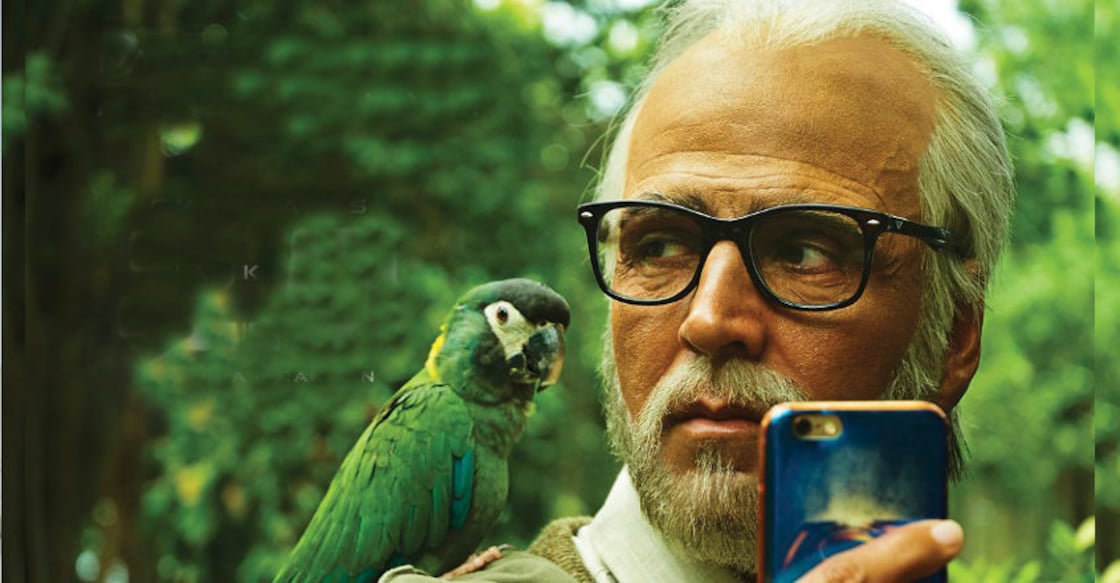Did Shankar's Pakshirajan of '2.0' commit suicide for fake cause?

Mail This Article
Shankar's '2.0' begins with a wide shot of a vast open field in orange-pink twilight. From a distance we can see an old man walking towards a giant mobile phone tower with slow unsteady steps, his gait conveying a terrible sadness. Next is a scary top angle shot. The old man has hung himself inside the hollow of the tower, his hands and legs flailing for life. And countless dark birds, as a portent of things to come, circle the suicide tower.
The old man, a venerable ornithologist by the name Pakshirajan, was perhaps attempting to demonstrate with his death what he was so desperately trying to tell people during the last days of his life: that high frequency radiation from mobile phone towers is killing the bird population. It now seems Shankar's old scientist has died for nothing.
Pakshirajan's fictitious fears
The first-ever comprehensive bird survey held in Kerala has found no evidence to validate Pakshirajan's fear. “We found nothing unusual in the bird population in areas where there is a profusion of mobile phone towers,” said P O Nameer, who coordinated the survey. Nameer is head of the Centre for Wildlife Studies, College of Forestry, Kerala Agricultural University, Thrissur. “Also, no noticeable difference in avian population was detected in areas dense in mobile towers and those without such towers,” Nameer added.
In fact, the survey found that there was a healthy presence of birds in areas where mobile phone density is high. For instance, there are more bird species in the Thiruvananthapuram Corporation area (237) than in largely unspoiled grama panchayats like Madayi (204) and Kodamthuruth (205). However, this being the first comprehensive survey, there is no baseline data for the researchers to compare avian numbers over the years.

The bird survey is the result of an unprecedented collective effort. It saw the coming together of the government, NGOs, academicians and bird watchers. Here are the agencies that were part of the survey: Forest Department, Kerala Agriculture University, Bird Count India (an informal partnership of organizations and groups working together to increase the collective knowledge about bird distributions and populations), Keralabirders (a collective of bird watchers in Kerala), and World Wildlife Fund (WWF), the leading organisation in wildlife conservation.
Bird deaths before '2.0'
It was not just filmmaker Shankar who had raised the scare. A few days before the release of '2.0', a blogger named Erin Elizabeth reported that nearly 300 birds fell dead during 5G cell phone tower experiment at The Hague, Netherlands.
Here is what the blog said: “About a week ago at The Hague, many birds died spontaneously, falling dead in a park. And if you are looking around that park you might have seen what is on the corner of the roof across the street from where they died: a new 5G mast, where they had done a test, in connection with the Dutch railway station, to see how large the range was and whether no harmful equipment would occur on and around the station. And harm happened, indeed. Immediately afterwards, birds fell dead from the trees. And the nearby ducks that were swimming seemed to react very oddly as well; they were simultaneously putting their heads underwater to escape the radiation while others flew away, landing on the street or in the canal.”
Eerily similar things happened in '2.0', too. Birds as lovable as babies keep falling like dead leaves during autumn when a new mobile tower begins functioning near the ornithologist's house. Pakshirajan's lawn is a collection of small mounds, each a bird grave with a white daisy placed on top.

Faking bird deaths
But soon enough the Erin Elizabeth horror story was called out by Snopes (one of the world's first fact-checking websites and considered the most unbiased) for what it was: fake news. Here's the Snopes version: “It turned out that Elizabeth’s article was the wholesale regurgitation of a series of Facebook posts authored by a man named John Khules who runs several anti-5G conspiracy websites and social media pages.” Kuhles, Snopes reported, had recently suggested that the devastating November 2018 California wildfires were triggered by a direct energy weapon as an act of revenge from the “Ruling Elite” to punish the state for vetoing a “mass 5G deployment” plan.
Nonetheless, the 5G test did happen but not in late October as Elizabeth and Khules told the world but on June 28, 2018. But it did not set off a series of bird deaths.
Read more: Latest Kerala news


